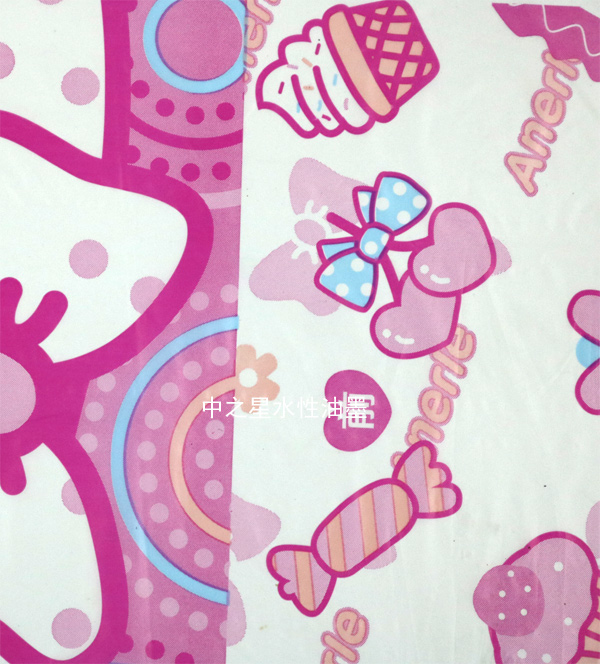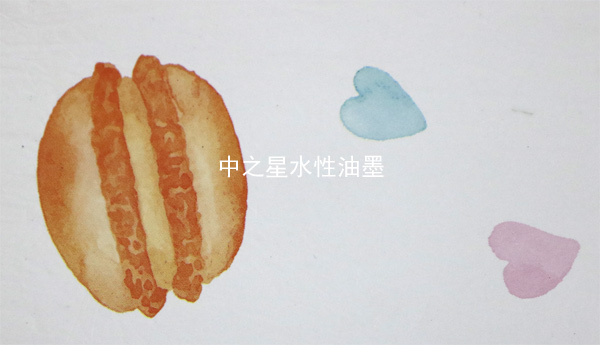The printability and application skills of water-based ink on non-woven fabric
Date: Dec 04 2023 From: Star Color Views:
With the increasing awareness of environmental protection and the continuous development of the printing industry, water-based ink, as an environmentally friendly and efficient printing material, is gradually favored by the printing industry.As a widely used textile material, non-woven fabric has the advantages of good air permeability and environmental protection, so it is widely used in many fields.This article will discuss the printability and application skills of water-based ink on non-woven fabrics, and help readers understand how to achieve high quality and efficient printing production.
Adaptability of
non-woven water-based ink in printing
1.Printing equipment compatibility
Water-based ink has good fluidity, so it is suitable for a variety of printing equipment, including gravure presses, web presses and plate presses.In non-woven printing, the appropriate printing equipment can be selected according to the actual needs.
2.Surface treatment of non-woven fabrics
The surface of non-woven fabric is rough, so it needs to be properly treated to improve its printing adaptability.The common treatment methods include corona discharge treatment, flame treatment and plasma treatment.These treatment methods can improve the wettability and adhesion of the surface of the non-woven fabric, which is conducive to achieving high-quality printing results.
3.Viscosity control of water-based ink
The viscosity of water-based ink has an important influence on the printing effect.Too high viscosity can lead to problems such as blocked mesh and uneven ink, while too low viscosity may lead to problems such as too fast drying of printed matter and reduced adhesion.Therefore, in non-woven printing, it is necessary to adjust the viscosity of water-based ink according to the actual situation to ensure a good printing effect.

Application skills of water-based ink in non-woven fabric printing
1.Estimated drying time
The drying time of water-based inks is affected by many factors, such as ink thickness, printing speed, ambient temperature and humidity,etc.In non-woven printing, it is necessary to estimate the drying time according to the actual situation, and adjust the printing speed and drying conditions and other parameters to ensure the quality and production efficiency of the printed matter.
2.Controlled reserves
In non-woven printing, ink quantity control is very important.Too much ink will lead to problems such as greasy and airtight print surface, while too little ink may lead to problems such as insufficient color and insufficient hiding power.Therefore, in the printing process, it is necessary to conduct reasonable control according to factors such as the material and color of non-woven fabrics.
3.Choose the right pigments and dyes
Pigments and dyes in water-based inks have an important effect on the color and fastness of printed matter.In non-woven printing, the appropriate pigments and dyes need to be selected according to the material and use of non-woven fabrics to obtain the ideal printing effect.At the same time, it is also necessary to pay attention to the stability of pigments and dyes and the compatibility with water-based inks to avoid precipitation, delamination and other problems.
4.Adjust printing pressure and speed
Printing pressure and speed have an important impact on the uniformity and clarity of non-woven prints.In the printing process, the printing pressure and speed need to be adjusted according to the actual situation to obtain the ideal printing effect.Generally speaking, the larger printing pressure and the slower printing speed are conducive to improving the clarity and adhesion of the print.
5.Optimize the post-treatment process
The post-treatment process has an important effect on the quality and performance of non-woven printed materials.Common post-treatment processes include hot pressing, cold pressing, light curing,etc.In non-woven printing, it is necessary to select the appropriate post-processing process according to the actual situation, and optimize the relevant parameters to improve the quality and performance of the printed matter.
Non-woven shopping bags have the advantages of environmental protection and degradability, so they are widely used in supermarkets, shopping malls and other fields.In the printing of non-woven shopping bags, water-based ink has a good application prospect.By selecting the right pigments and dyes and adjusting parameters such as printing pressure and speed, good printing results and adhesion can be achieved.At the same time, optimizing the post-treatment process can improve the stiffness and waterproof performance of non-woven shopping bags.
This paper discusses the printability and application skills of water-based ink on non-woven fabric, including the adaptability, application skills, case analysis and application practice of water-based ink in non-woven fabric printing.The results show that the high quality and high efficiency of non-woven printing can be achieved by rationally controlling the viscosity of water-based ink, selecting suitable pigments and dyes and adjusting the printing pressure and speed.In the future, with the continuous improvement of environmental awareness and the continuous development of technology, water-based ink will be more and more widely used in textile materials such as non-woven fabrics.

 RU
RU
 EN
EN
 CN
CN


